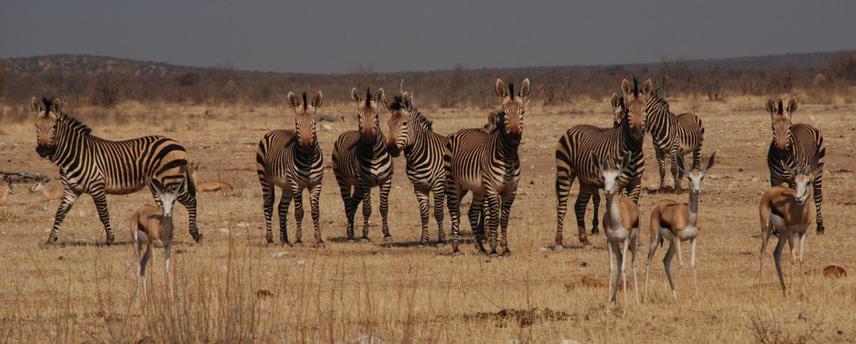Morris Gosling
Other projects
14 Sep 2006
Conservation of Hartmann's Mountain Zebra and their Nama Karoo Habitat in Namibia
30 Jul 2018
What Factors Limit Mountain Zebra Populations in Namibia and when is Intervention Necessary for Conservation Management?
To develop techniques for scientifically based conservation management of mountain zebra populations and promote them as a flagship species for wider ecosystem conservation in Namibia.

The work to be carried out under a second Rufford Small Grant award extends the pilot work carried out on the mountain zebra population of Gondwana Cañon Park to wider areas of southern Namibia. Mountain zebra are a flagship species for ecosystem conservation in Namibia but can also become locally abundant and damage valuable plant communities. Unfortunately, large predators are much reduced and fencing often limits movement to alternative forage. Populations are thus rarely naturally limited and careful management intervention is sometimes necessary. I aim to build up a suite of techniques which allow practical conservation management when needed.
Mountain zebras are both an iconic species and a valuable resource and these techniques will benefit all landowners in Namibia who need to manage mountain zebra populations . The first step is to establish robust techniques for estimating population size, and, since water is a vital and limiting resource for mountain zebras, to estimate the numbers visiting individual water holes. Ground transect counting is often used but the flight behaviour of mountain zebras in mountainous terrain makes these techniques difficult to carry out and unreliable. As an alternative I am developing mark-recapture techniques based on individual recognition. Like human fingerprints, all mountain zebra stripe patterns are distinct and individual recognition is carried out using a bar code system based on stripe variation. Under present Rufford funding, the priority is to develop the individual recognition and mark-recapture systems for wide use and, if possible, to establish simple surrogates for key population characteristics. In the future, these approaches will be extended to individual-based based modelling to assess carrying capacity and off-take rates so that surplus animals can be removed before habitat damage occurs and reintroduced in other areas.
A further conservation problem is that that when mountain and plains zebra occur together they sometimes form social bonds. Although unproven, putative hybrids have been reported which potentially raises a problem for the genetic integrity of mountain zebra. The problems of population management and hybridization cannot be solved in a single area and I am expanding my study to carry out pilot observations on mountain zebras in other places where they occur with plains zebra. Information will be passed to conservancies and other collaborating landowners as well as the Ministry of Environment and Tourism for conservation management and will contribute to a new IUCN assessment of conservation status.